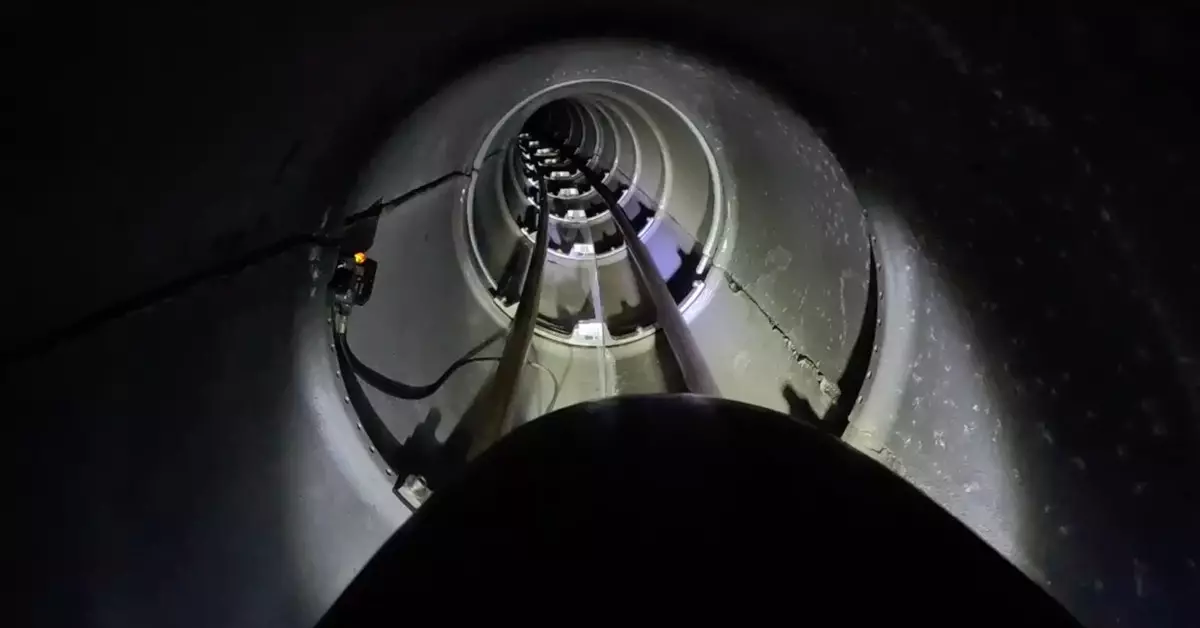The hyperloop concept, introduced by Elon Musk in 2013, promised the possibility of high-speed travel in aerodynamic capsules that could zip through low-pressure tubes at remarkable velocities. The potential implications of this transportation method include reduced travel times between cities, transformed urban dynamics, and a significant evolution in logistics and commuting. Despite initial excitement, the hyperloop’s journey has been tumultuous, facing a multitude of challenges such as funding issues, regulatory roadblocks, and a general perception of being an impractical vision. However, a recent development in Switzerland demonstrates that the hyperloop’s aspirations are not entirely extinguished.
In Lausanne, a dedicated team comprising members from the Federal Institute of Technology Lausanne, the School of Business and Engineering Vaud, and Swisspod Technologies is actively working to bring the hyperloop closer to reality. They recently conducted an extensive test on a 1/12th scale model at a circular track of modest dimensions—125.6 meters in circumference. While this might seem insignificant in the grand scheme of transportation innovation, the team achieved noteworthy feats, most notably traveling 11.8 kilometers at a commendable speed of 40.7 km/h. The leaders of this venture assert that these test results can be extrapolated to suggest potential journeys of up to 303.4 km/h over distances comparable to those between major cities like Geneva and Bern.
Critics of the hyperloop concept have long voiced skepticism, arguing that while theoretical aspects may hold promise, practical implementations are fraught with difficulties. Most companies dedicated to building hyperloop systems have shuttered operations, suffering from inadequate financial backing and overwhelming logistical complexities. The assertion that hyperloop remains “vaporware”—a term that hints at a product that exists only as a concept—has been prominent in the media discourse. Nonetheless, the Swiss team’s initiative demonstrates a commitment to overcoming these barriers through empirical research and testing.
Dubbed the LIMITLESS project, which stands for Linear Induction Motor Drive for Traction and Levitation in Sustainable Hyperloop Systems, the undertaking not only focuses on propulsion but also emphasizes crucial subsystems such as power electronics and thermal management. Such detailed examinations during tests are essential for ensuring the viability of a full-scale hyperloop system. The progression from a small-scale model to a real-world application requires diligence in addressing energy consumption, thrust variations, and control methodologies during various operational phases. These tests paint a picture of a robust commitment to realizing Musk’s vision.
Future Directions and Challenges
Despite the excitement surrounding these developments, the obstacles ahead are formidable. The road to a fully functional hyperloop has not only technological dimensions but also financial and regulatory ones. Swisspod’s ambitions to conduct future tests—including those for cargo transport—are commendable; however, they face a reality where not a single full-scale hyperloop exists globally. While the Swiss team holds a forward-looking perspective, the prevailing conditions in the transportation sector necessitate concrete government support and public buy-in.
While Musk, once the driving force behind the hyperloop narrative, has diverged towards other ventures like The Boring Company, the essence of the hyperloop has not vanished entirely. The current sentiments surrounding this ultra-modern transport solution reflect both ambitious dreams and harsh realities. The advancements made by the Swiss team run parallel to a growing urgency for innovative solutions to urban mobility issues.
The efforts emerging from Switzerland provide not only hope for the hyperloop’s future but also signify a vital chapter in the continuum of transportation innovation. While challenges are inevitable, the commitment displayed by researchers and engineers may ultimately pioneer what was once thought to be an unfeasible dream. As the world continues to grapple with the complexities of urban transit, the story of hyperloop remains a fascinating intersection of aspiration, technology, and resilience.


Leave a Reply
You must be logged in to post a comment.